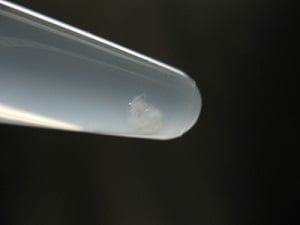Spectrophotometric analysis, also called spectral scanning, of biomolecules serves two main purposes – the quantitation of nucleic acids (DNA and RNA) and purity assessment. Since the amount or concentration and purity of the DNA or RNA in a solution significantly affect the results of subsequent downstream applications, establishing these values early on can reduce, if not totally eliminate, the risk of committing errors and guarantee optimum results.
What is Spectral Analysis and How Does It Work?
Spectral analysis is primarily based on the principle that the chromophores of nucleic acids and protein molecules absorb ultraviolet light in a particular pattern. So, by exposing a DNA or RNA sample at a specific wavelength (typically 260 nm, 280 nm, 230 nm) and measuring the light that passes through the sample using a photodetector, the researcher can compute for the nucleic acid concentration accordingly. Generally, samples with high nucleic acid content will absorb more light and produce a higher optical density (OD).
Using the Beer-Lambert law, one can relate the concentration of the absorbing molecule to the amount of absorbed light and compute for the corresponding Absorbance (A) value using the following formula:
A = log10 Io/I = elc
where:
e = Molar absorption coefficient or extinction coefficient of the analyte
l = Optical path length or the length of solution the light passes through (cm)
c = Molar concentration of the solution (M)
Note:
- At 260 nm, the average extinction coefficient for single-stranded DNA is 0.027 (µg/ml)-1 cm-1, 0.020 (µg/ml)-1 cm-1 for double-stranded DNA, 0.025 (µg/ml)-1 cm-1 for single-stranded RNA, and 0.00057 (µg/ml)-1 cm-1 for protein. On the other hand, the average extinction coefficient for single-stranded oligonucleotides will depend on their length and base composition.
- At 280 nm, the average extinction coefficient for double-stranded DNA is 0.010 (µg/ml)-1 cm-1 and 0.001 (µg/ml)-1 cm-1 for protein.
Aside from determining the concentration of nucleic acids and proteins in a solution, spectral analysis can also be used to assess sample purity. Some of the most common contaminants include biomolecules of competing species and residual components from reagent kits (e.g., alcohol, phenols, salt, etc.).
In determining the absorbance ratio, you’ll need to take two separate spectrophotometric measurements (one at 260 nm and another at 280 nm) and calculate for the ratio of the two wavelengths. If the contaminant present in the sample has a chromophore exhibiting significant absorptivity within the wavelength range used, their absorption profiles will be captured. Thus, you would be able to establish a quick overview of their presence.
For samples containing a mixture of DNA and protein molecules, the absorbance ratio can be calculated using the following equation:
A260 = (eDNA260)(%DNA) + (eProtein260)(%Protein)
A280 (eDNA260)(%DNA) + (eProtein260)(%Protein)
Since proteins (particularly aromatic amino acids) are known to absorb UV light at 280 nm, calculating the ratio of the absorbance at 260 nm and 280 nm will give you the amount of protein contamination left from the nucleic acid isolation process.
Note: The A260/280 ratio for pure RNA is ~2.0, while the ratio for pure DNA is ~1.8. Proteins would have a 0.57 ratio while the ratio of samples containing DNA and protein would depend on the macromolecules present in the mixture.
In essence, a low reading indicates the presence of residual phenol or other reagents from the extraction process or an extremely low concentration of nucleic acid (<10 ng/µl), while a high reading may be caused by the presence of residual RNA from the nucleic acid extraction process.
A260/280 ratios are also influenced by several other factors which may include the following:
- Instruments used –the variability of wavelength accuracy between instruments may result in slightly different ratios
- Sample concentration – there is minimal difference between the absorbance at 260 nm and 280 nm when using dilute samples
- Type of protein in the sample – proteins containing more amino acids with aromatic side chains are expected to have a higher extinction coefficient, since absorbance in the UV range of proteins mainly occurs in the aromatic ring structures






